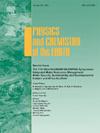A review of studies on underground dam site selection
IF 4.1
3区 地球科学
Q2 GEOSCIENCES, MULTIDISCIPLINARY
引用次数: 0
Abstract
The rapid growth of the global population, particularly in arid and semi-arid regions, underscores the increasing need for water resource development and supply for urban, industrial, and agricultural purposes, as well as for addressing water scarcity challenges. Among the various water resources, groundwater holds a critical role in meeting water demands across different parts of the world due to its accessibility, quantity, and quality. Given the substantial contribution of groundwater to fulfilling the water needs of arid and semi-arid areas, the use of technologies such as underground dams for effective groundwater management and utilization is of great significance. An underground dam, composed of a watertight wall, serves purposes such as groundwater storage, preventing seawater intrusion in coastal areas, and more. This study introduces the advantages, applications, and classifications of underground dams while reviewing the evaluation criteria, methods, and findings from previous studies on identifying suitable locations for constructing these dams.
In order to identify trends in research on underground dams, related articles published over a fifty-year period were statistically analyzed and categorized into four main topics across five ten-year periods. The results indicated that in recent decades, there has been a significant increase in studies related to underground dams, particularly in the area of site selection.
地下坝选址研究综述
全球人口的快速增长,特别是在干旱和半干旱地区,凸显了对城市、工业和农业用水开发和供应以及应对缺水挑战的日益增长的需求。在各种水资源中,地下水因其可及性、数量和质量在满足世界各地的用水需求方面发挥着关键作用。鉴于地下水对满足干旱半干旱地区的用水需求有重要贡献,利用地下坝等技术对地下水进行有效管理和利用具有重要意义。由水密墙组成的地下坝,有储存地下水、防止沿海地区海水入侵等用途。本文介绍了地下坝的优势、应用和分类,综述了地下坝选址的评价标准、方法和研究成果。为了确定地下坝研究的趋势,对50年来发表的相关文章进行了统计分析,并将其分为五个十年期间的四个主要主题。结果表明,近几十年来,与地下坝有关的研究显著增加,特别是在选址方面。
本文章由计算机程序翻译,如有差异,请以英文原文为准。
求助全文
约1分钟内获得全文
求助全文
来源期刊

Physics and Chemistry of the Earth
地学-地球科学综合
CiteScore
5.40
自引率
2.70%
发文量
176
审稿时长
31.6 weeks
期刊介绍:
Physics and Chemistry of the Earth is an international interdisciplinary journal for the rapid publication of collections of refereed communications in separate thematic issues, either stemming from scientific meetings, or, especially compiled for the occasion. There is no restriction on the length of articles published in the journal. Physics and Chemistry of the Earth incorporates the separate Parts A, B and C which existed until the end of 2001.
Please note: the Editors are unable to consider submissions that are not invited or linked to a thematic issue. Please do not submit unsolicited papers.
The journal covers the following subject areas:
-Solid Earth and Geodesy:
(geology, geochemistry, tectonophysics, seismology, volcanology, palaeomagnetism and rock magnetism, electromagnetism and potential fields, marine and environmental geosciences as well as geodesy).
-Hydrology, Oceans and Atmosphere:
(hydrology and water resources research, engineering and management, oceanography and oceanic chemistry, shelf, sea, lake and river sciences, meteorology and atmospheric sciences incl. chemistry as well as climatology and glaciology).
-Solar-Terrestrial and Planetary Science:
(solar, heliospheric and solar-planetary sciences, geology, geophysics and atmospheric sciences of planets, satellites and small bodies as well as cosmochemistry and exobiology).
 求助内容:
求助内容: 应助结果提醒方式:
应助结果提醒方式:


